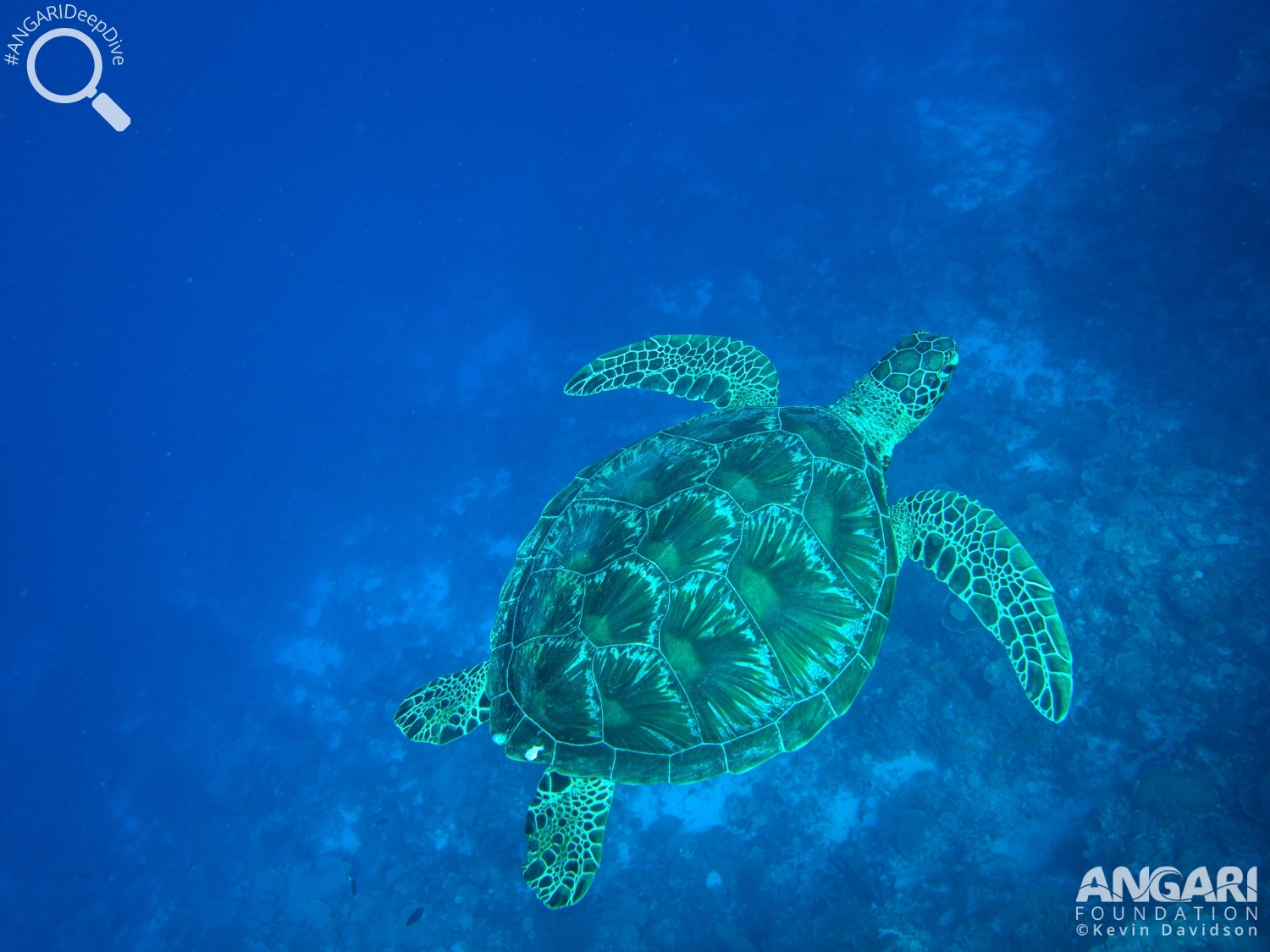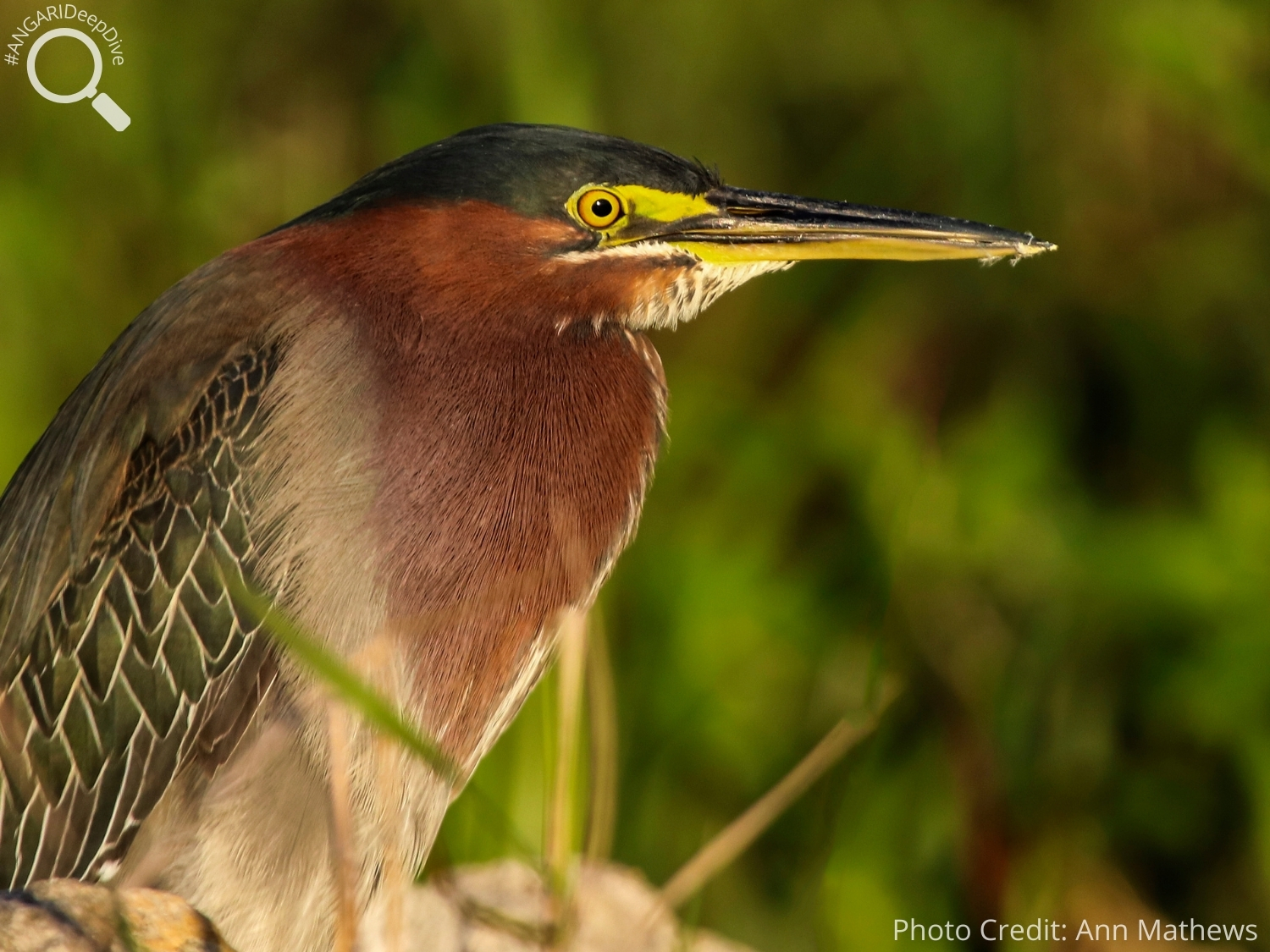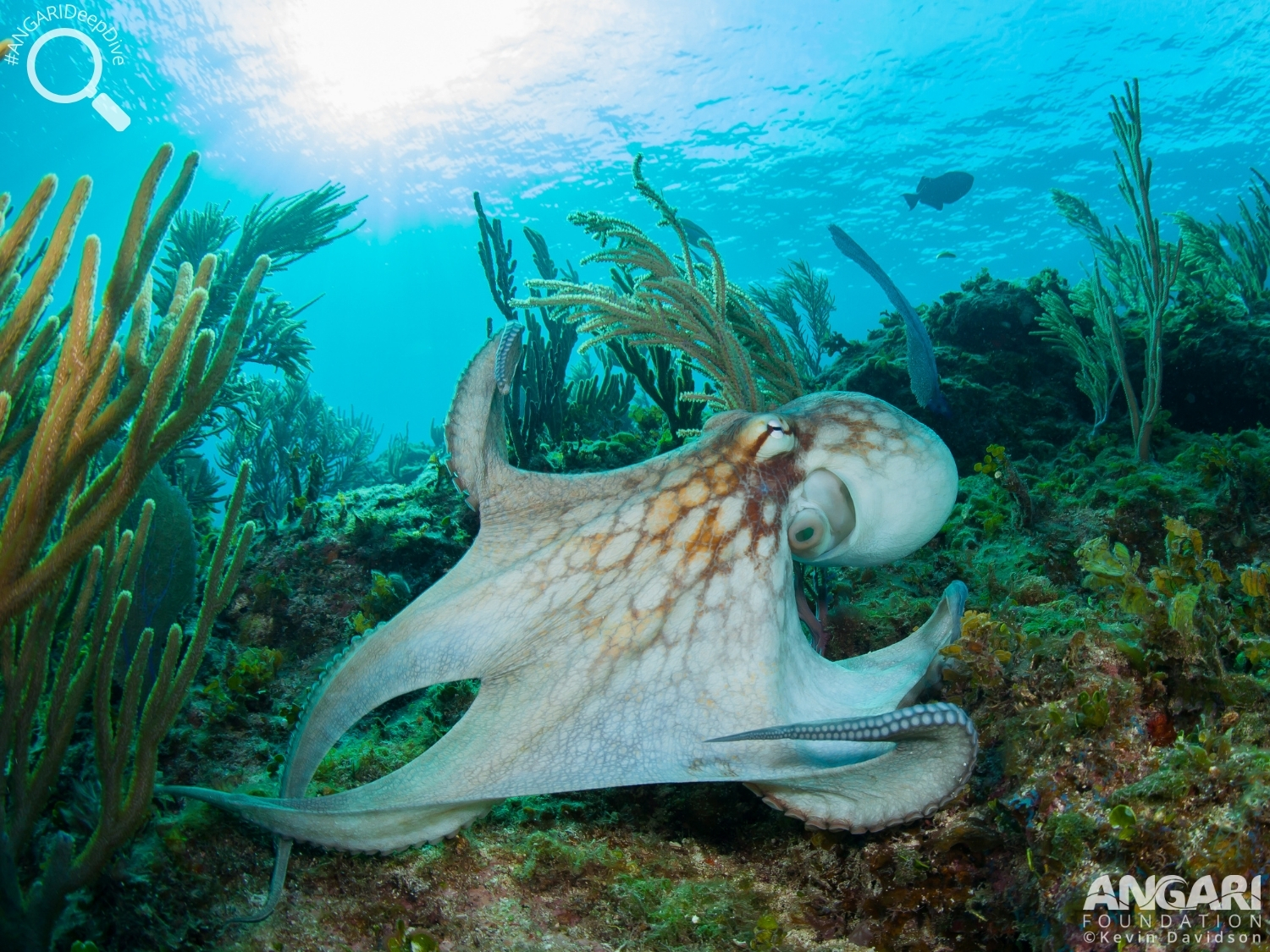The large hard shelled green sea turtle is an endangered species that have been around over 110 million years but faces many threats today.

Turtle Grass (Thalassia testudinum)
Turtle grass (Thalassia testudinum) is a species of seagrass that is extremely important for a number of reasons such as stabilizing seabeds, maintaining water quality and providing habitat and food for many marine organisms.
Seagrass is sometimes mistaken for seaweed, but they are very different. One clear distinction is that seagrass is a plant with roots, stems and leaves while seaweed are multicellular algae. This means that seagrass and seaweed differ greatly in structure and how they transport nutrients.
The specialized root system of seagrasses allows it to anchor itself into many different types of substrate. Seaweed doesn’t have this ability and uses a holdfast to secure itself to hard surfaces like rocks and shells. Like other plants, seagrass can transport nutrients from the sediment, up its roots and throughout its vascular network, but seaweed must extract its nutrients from the water through diffusion.
Keep reading for some exciting and interesting facts about turtle grass.
#1: Where can you find turtle grass?
Turtle grass grows throughout the Gulf of Mexico and the Caribbean Sea. There are 60 species of seagrass found worldwide, and seven of these species grow in Florida, with turtle grass being the most common seagrass found off the coast of Florida. You will typically find turtle grass meadows on sandy areas between the low tide level and depths of 30ft, an area with available sunlight to allow for photosynthesis.

#2: Is turtle grass in your backyard?
Turtle grass is surprisingly similar to the grass in our backyards. The blades are like ribbons; they are flat and can grow 14 inches long and ½ inch wide. It is this broad appearance that makes it different from other species. Each rhizome (type of root) is buried about 10 inches below the seabed and typically contains 2-5 blades of seagrass. In the summer months, the seagrass produces white or pink flowers, which is incredibly unique for a fully submerged plant!
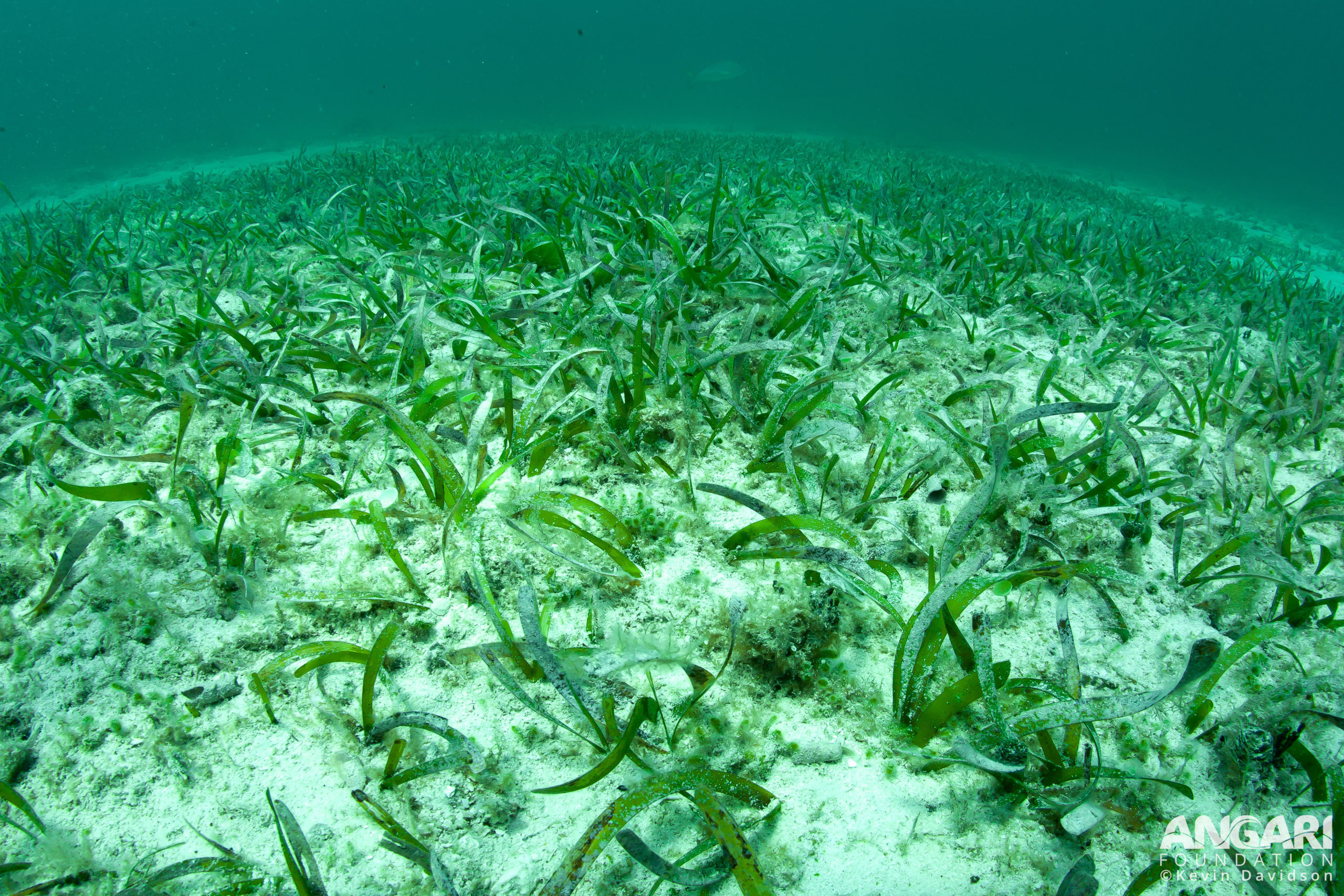
#3: Turtle grass is tolerant.
Turtle grass is very tolerant and can endure environmental stressors, like low temperatures, low salinity or high wave intensity. However, areas of high and stable salinity create the perfect environment for turtle grass to grow and flourish!
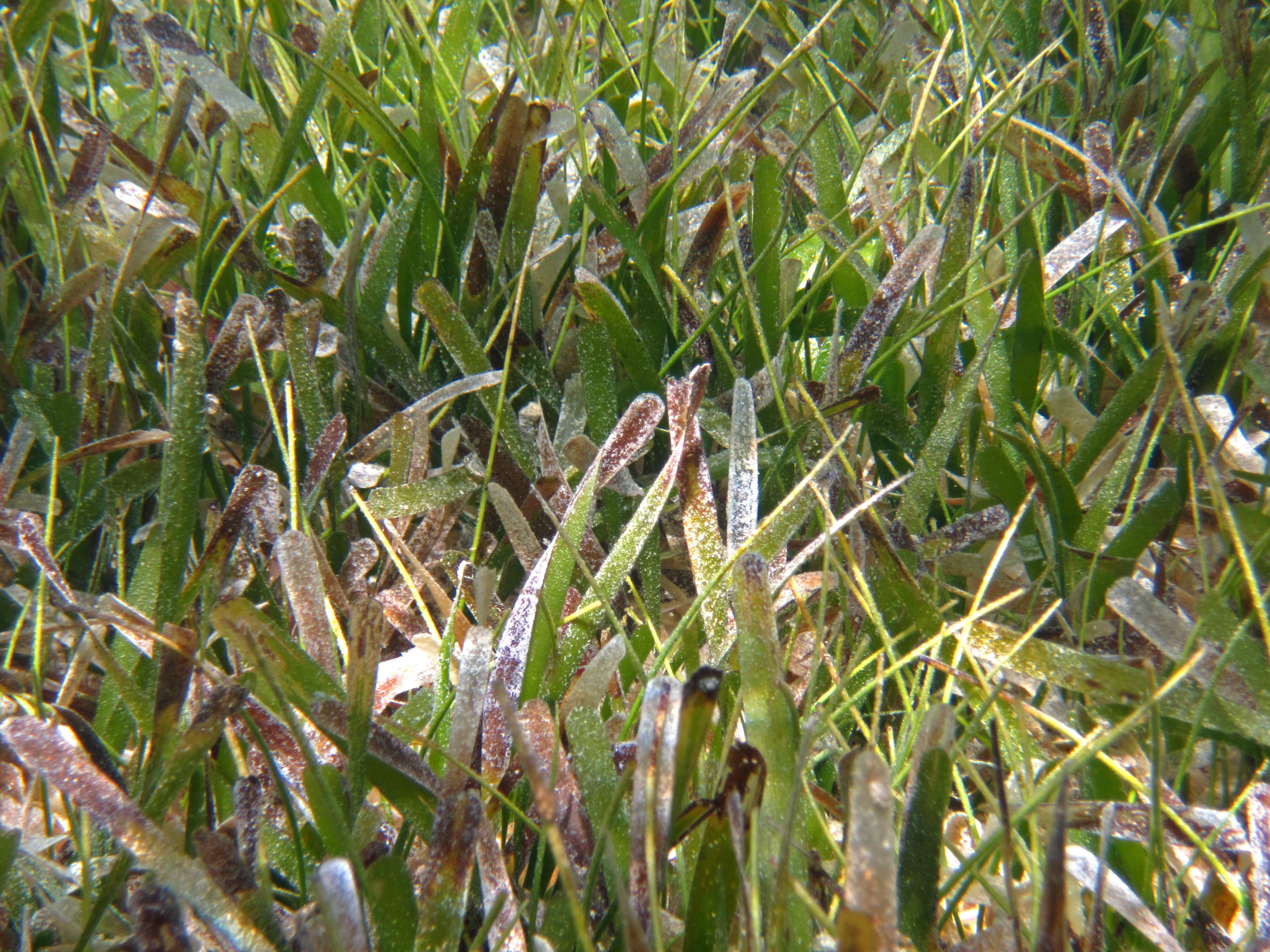
#4: How does turtle grass reproduce?
Turtle grass can reproduce using two methods – vegetative and sexual reproduction. Vegetative reproduction is when rhizomes grow due to the cloning of cells, which allows for seagrass beds to spread rapidly; however this cloning method can limit the genetic diversity of the colony. Sexual reproduction occurs when female flowers are fertilised by pollen carried by the underwater currents.

#5: Why is it called turtle grass?
Given its name, it shouldn’t come as a surprise that turtle grass is an important food source for green sea turtles! It is actually one of the reasons that green sea turtles have their name. The fat of a green sea turtle is green because of all the green vegetation they eat, including turtle grass!
However, it is part of many other animal diets too, like the manatee. Seagrass also plays a vital role as a nursery habitat for juvenile fish and invertebrates, such as the spiny lobster, as they seek protection within the blades of seagrass.
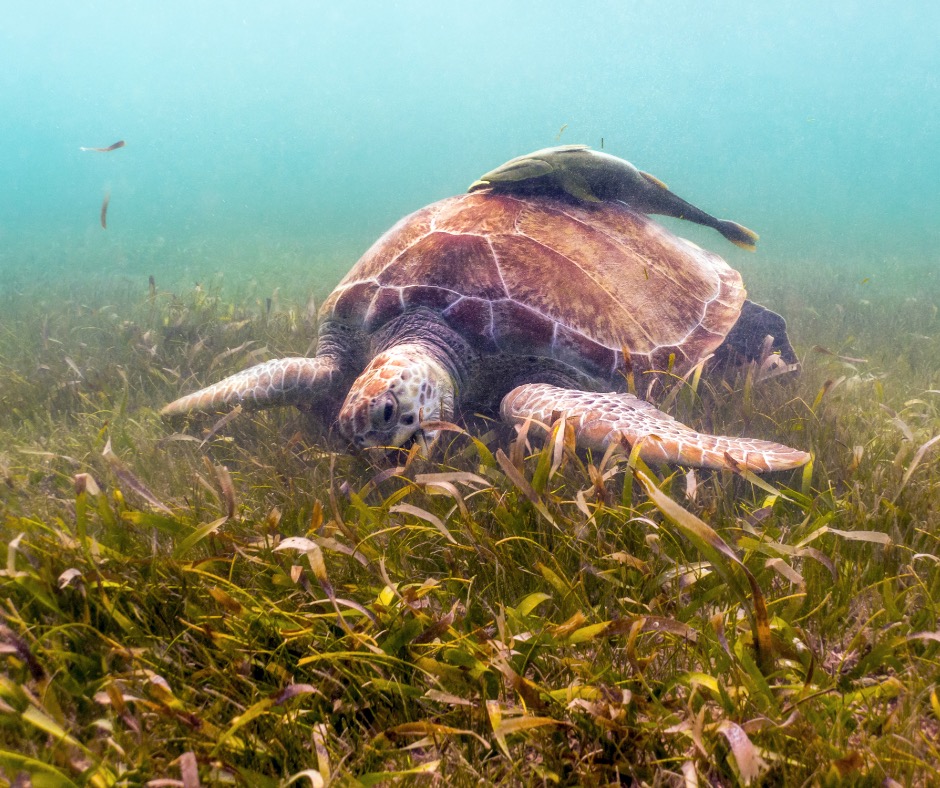
#6: Turtle grass provides hidden protection.
Turtle grass meadows are beautiful to see when underwater, but what we don’t see is the root system below the seabed and the important role it plays. The dense structure of the roots collects sand, binds the substrate together and prevents erosion. This is especially important during storms and hurricanes.
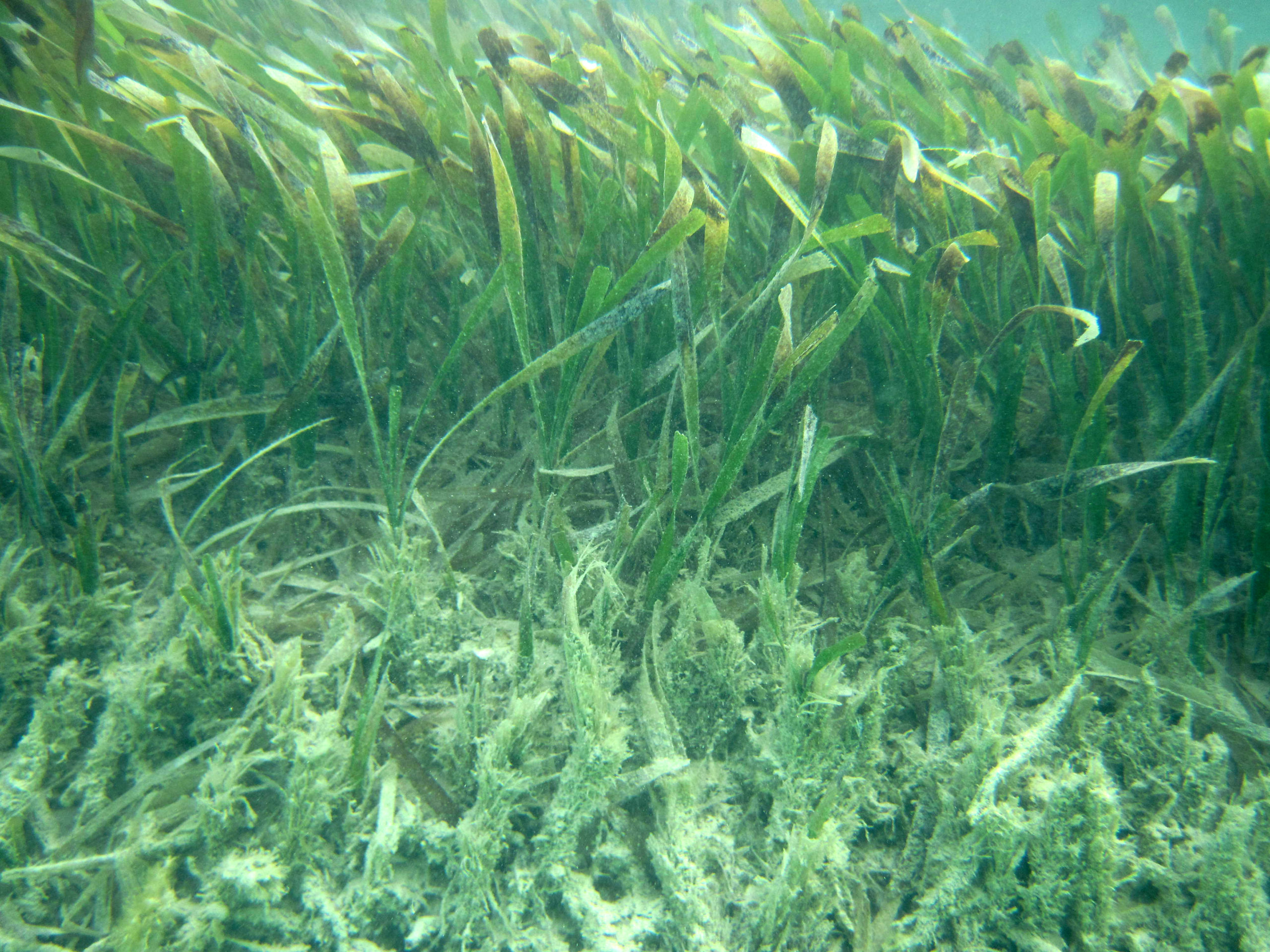
#7: Is turtle grass threatened?
Turtle grass and other seagrasses face threats that are mostly caused by humans including:
☠️Agricultural and urban runoff that cause algal blooms, which in turn reduce the amount of sunlight available to seagrasses
⚓Boat anchors and propellers can damage seagrass meadows
Since seagrass is a main diet for our local manatee populations, seagrass loss is causing a serious decline in the health and survival of manatees. Local organizations, like the Florida Fish and Wildlife Conservation Commission, are doing all they can to restore seagrass levels to what they used to be!
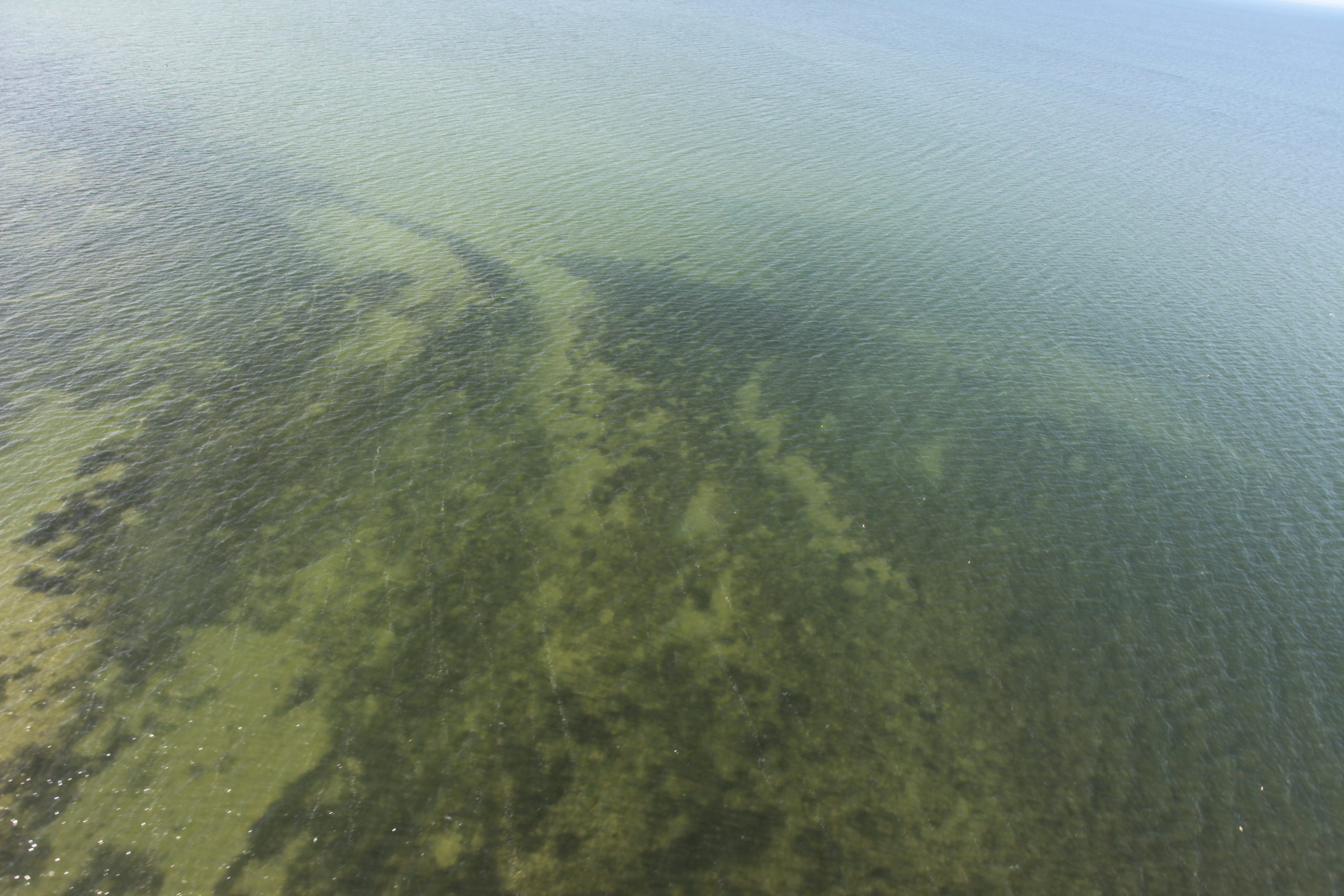
#8: Citizen scientists can help protect seagrass.
Seagrass is one of the most efficient natural carbon sinks on our planet, so monitoring their health has never been more important. GIS mapping is a common technique used, but more recently, citizen science has become a great way for people like you to get involved, learn, have fun and contribute to a great cause. The Project Seagrass app allows you to report your own seagrass sightings and take part in protecting these species.
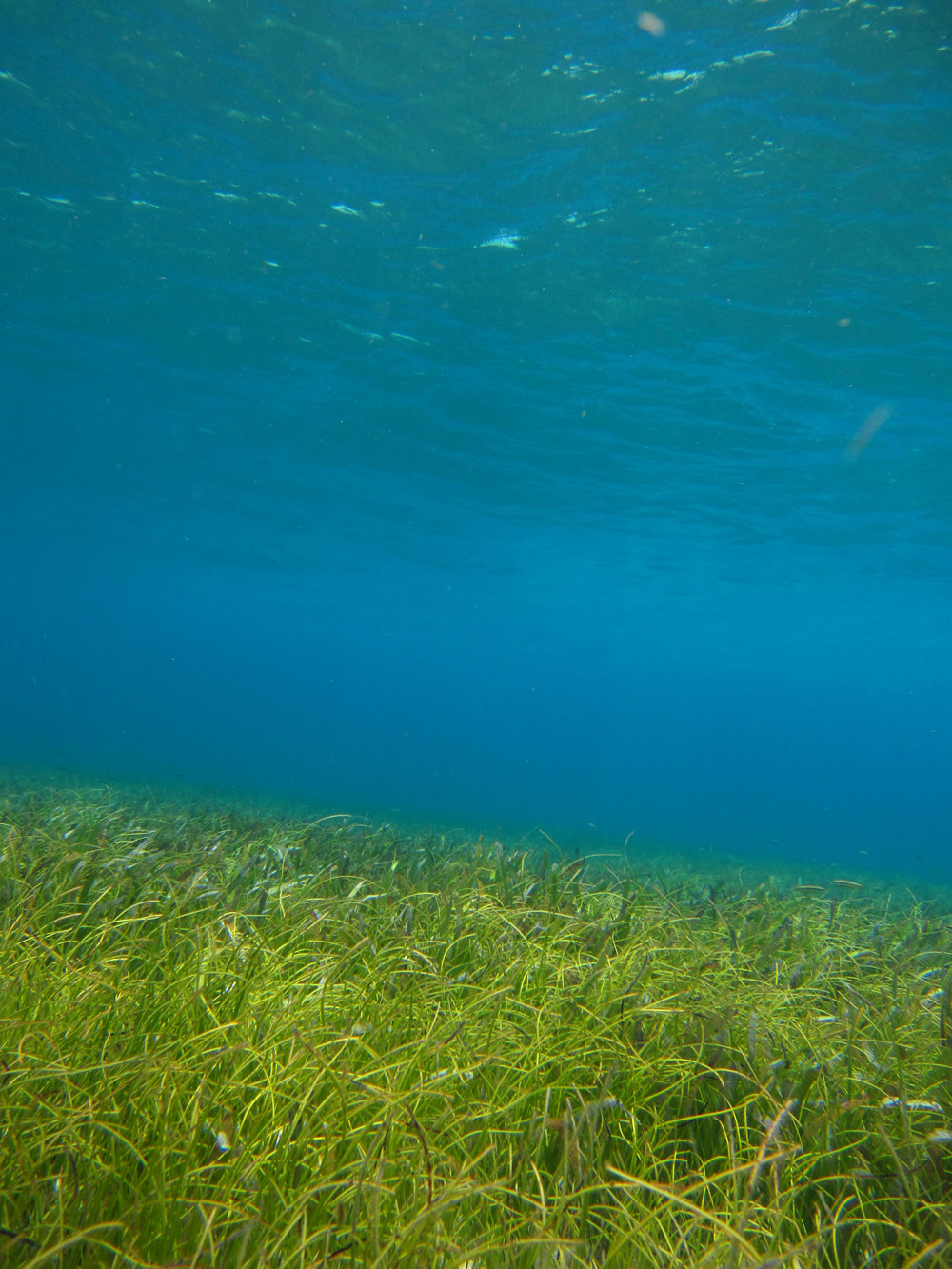
With so many species relying on turtle grass, including threatened marine animals like the green sea turtle and Florida manatee, we need to make sure that these seagrass meadows stay healthy and are protected. You can do your part by reducing fertilizer use and preventing runoff into canals and waterways. When boating, be safe and use good practices and planning to avoid damaging seagrass meadows!
Additional Turtle Grass Resources:
1. Florida Museum – Seagrass Species Profile (Turtle Grass)
2. Florida Fish and WildlifeConservation Commission – Accelerating Recovery of Seagrass Habitats

